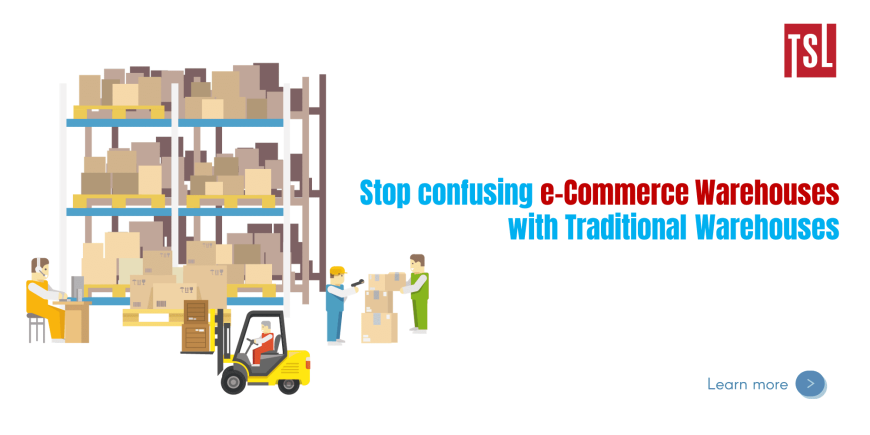Stop confusing e-Commerce Warehouses with Traditional Warehouses!
In recent years, e-commerce has grown in popularity and importance in both the global and Vietnamese business landscape. However, many companies expand and launch their e-commerce business without adequate preparation and knowledge. As a result, they fail to pay attention to the unique requirement of the e-commerce business model.
There are particular requirements for conducting business on an e-commerce platform that set it apart from other types of business. E-commerce warehouse storage and management are two unique requirements that many organizations have not paid adequate consideration.
This article will provide helpful information regarding e-commerce warehousing and e-commerce warehouse management are, the different types of e-commerce warehouses, and how an e-commerce warehouse management system can help you as compared to a traditional warehouse management system.
What is e-commerce warehousing?
E-commerce warehousing refers to the process of storing and managing goods intended for online sales in a warehouse. Some e-commerce warehouses are owned and operated by the retailer, while others are managed by third-party fulfillment providers and 3PLs. E-commerce warehouse management encompasses the management of all operations and processes in running an e-commerce warehouse. The most common e-commerce warehousing operations include:
- Taking appropriate safety and security measures for inventory storage
- Receiving and stowing inventory as it arrives in your e-commerce warehouse
- Managing bin, shelf, and/or pallet locations of each SKU for optimized warehouse slotting
- Performing warehouse audits and inventory audits
- Recording stock levels and running inventory reports
Types of e-commerce warehouses
There are a variety of e-commerce warehouse options that suit different businesses’ needs. The best e-commerce warehouses not only have the amenities and expertise to provide the digital fulfillment services needed but also enable brands to store inventory in strategic locations that are physically near their customer base for the quickest and most cost-efficient delivery.
Let’s take a look at some of the more popular e-commerce warehouse types and when they are useful.
Leased warehouses
Running an e-commerce warehouse requires the right tech to be in place. There are businesses that can employ warehouse management systems (WMS) for brands that have their own warehouse and need help managing inventory in real time, reducing picking, packing, and shipping errors, and scaling with ease.
Warehousing from home
Many e-commerce businesses start out by storing e-commerce inventory at home (in their living room, basement, garage, office, etc.). This type of warehouse can be suitable if your business has a small order volume. Business owners can transform their home into a makeshift e-commerce warehouse, which will significantly reduce storage charges. However, the limited space will start to become a problem when your business grows.
Fulfillment centers or distribution centers
More functional than a traditional warehouse, a fulfillment center or distribution center is an e-commerce warehouse designed to receive and store your inventory and pick, pack, and ship your orders in a timely manner. The most common type of fulfillment centers used amongst e-commerce businesses is outsourcing fulfillment to a 3PL. These professional fulfillment services handle order fulfillment on your behalf.
On-demand warehousing solutions
On-demand warehousing allows businesses to rent available storage space for short periods at a time. Most of these solutions are provided by technology companies that contract warehouses with excess, shared warehouse space to store your inventory.
This model can be good for seasonal sales or pop-up events. But because they don’t handle any order fulfillment services themselves, on-demand warehousing is kind of like outsourcing fulfillment to a company that outsources it to others.
Dropshipping
Dropshipping refers to when the product’s manufacturer controls the entire supply chain, including producing, storing, and shipping items. When a customer places an order online, the manufacturer ships the item directly from their factory to the consumer, so the merchant never handles inventory.
Since most dropshipping arrangements are done overseas, transit times are notoriously long. While this model can help prove out a business concept, the merchant has no inventory control or oversight of the customer experience.
Most companies have selected the most suitable type of e-commerce warehouse for their business. However, many continue to believe that they can apply the traditional warehouse management strategy and software for their e-commerce warehouse. While this will work, traditional warehouses and warehouse management systems are not built to handle the specific demands of e-commerce, such as the amount of space and amenities needed, the type and quantity of orders received, and the fluctuations in demand. Being unprepared for these things may eventually affect your productivity, reduce your efficiency, and end up costing you more than necessary. As a result, the e-commerce warehouse management system is designed to be able to handle those particular requirements.
What are e-commerce warehouse management systems and how can they help you?
An e-commerce warehouse management system is a version of the traditional warehouse management system, but it’s specially designed to handle an e-commerce warehouse. Here are a few areas where using an e-commerce warehouse management system can benefit you more than a traditional system:
Designed for single-item orders
Traditional warehouse management systems are used in warehouses that mainly deal with orders that contain several items. Therefore, they are programmed to work with pallets, racks, and other large equipment to fulfill orders containing several products. E-commerce, however, primarily deals with single-item orders. According to Peoplevox, around 80% of orders that e-commerce businesses receive only contain one product. Therefore, e-commerce warehouses require a system that can handle fulfilling large volumes of single-item orders—this includes planning the quickest route to each item, picking the right item for each order, packing it appropriately, and shipping it to the right address. A traditional system may be able to handle this, but the work may not be as efficient as it could be when using a system designed for this volume of small orders.
Able to withstand demand fluctuations
All warehouses see fluctuations in consumer demand, which is typically caused by changing trends and seasonal demands. Depending on the type of business, the fluctuations could be for a specific product or a whole category. For instance, towards the end of the year, holiday-themed products are in high demand, but not so much during other parts of the year. Regardless of what is being purchased, changes in demand are usually expected and easy to manage in traditional warehouses. Ecommerce, however, experience the same changes as traditional warehouses, but demand rises and falls by a larger percentage. To cope with this, you need a system to handle all the orders you receive as well as a server that can handle the traffic of all the customers using your website. An e-commerce WMS can provide both of these features.
Accurate inventory management
Having an accurate count of your inventory is essential for any type of warehouse, but it is especially important for e-commerce warehouses. This is because these stock numbers are always directly reflected on your e-commerce website for your customers to see. Not knowing what you have in stock and displaying incorrect quantities can leave a bad impression, hurt your sales, and make orders time-consuming to sort out. With accurate inventory management, you can display how many products you have left in stock (like Amazon does), giving customers an incentive to buy from you before stock runs out. An e-commerce WMS can help you keep track of all of your incoming and outgoing inventory, and integrate with your e-commerce platform so that everything is synced and running smoothly.
Handling more returns
A typical return process in e-commerce starts when the buyer initiates the return, after which the business generates a return label, collects the returned item, updates their inventory and the order status, and finally notifies the customer of the return status and refund or exchanged product. Each of these processes needs to be executed in this order, on time, and correctly for the return to be fully processed. An error in even one of these processes messes up the flow for the rest.
Traditional warehouses don’t generally see a large number of returns, so they are not built to cope with all these steps in high volumes. A traditional warehouse management system may not be able to process multiple returns at once and that can lead to errors, which means more work for you.
E-commerce businesses, on the other hand, track the highest number of returns of any type of business. Therefore an e-commerce system is specifically designed to handle many simultaneous return processes quickly and effectively.
E-commerce businesses have unique requirements and processes. Using an appropriate e-commerce warehouse and e-commerce warehouse managing system can noticeably streamline your operations and improve your ability to handle frequent changes in demand, single-item orders, high return volume, and more.
*Source: www.zoho.com, www.shipbob.com










